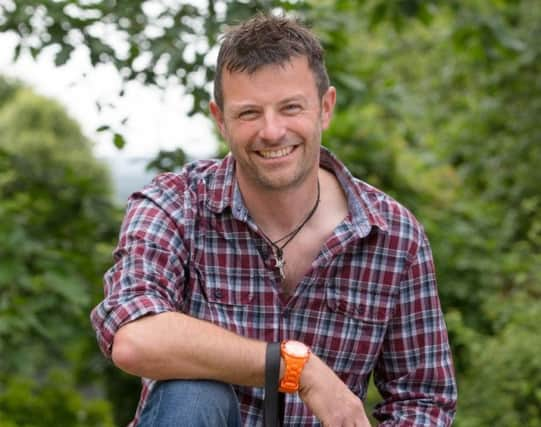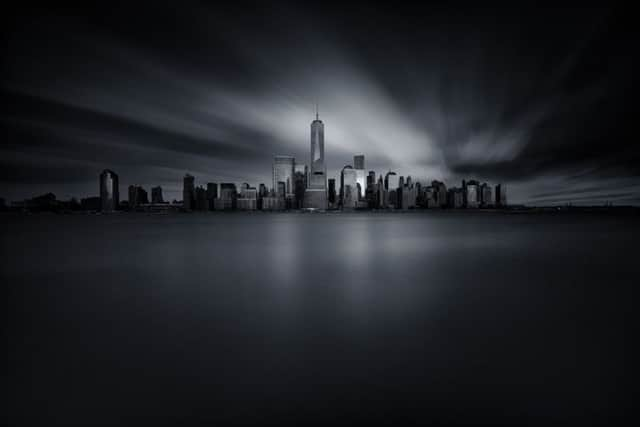How mindfulness helps an acclaimed photographer


Landscape photographer Paul Sanders’ work takes him to some of the wildest and most adventurous parts of the world: Kyrgyzstan, Albania, Glasgow… A former photographer for Reuters and picture editor for the Times, now a fine art landscape photographer, often working in black and white, Paul passes on his knowledge in Light & Land photographic tours and workshops around the world, from Puglia to Paris, Wales to Macedonia. But it’s his mindful approach that helps set him apart; mindfulness, he suggests, not only makes for better landscape photos, but can help create calmer, happier people. Here, he talks about mindfulness, meditation, appreciating nature and the greatest thing about working in Scotland…
What’s the connection between mindfulness and landscape photography?
Advertisement
Hide AdAdvertisement
Hide AdMindfulness is about being present in the moment. So, in a way, landscape photography is all about mindfulness. To get a photograph that truly represents a place, you have to be completely present in the moment you take the picture, not distracted by anything. You need to be giving the location your full attention.


How does a mindful approach to landscape photography work in practice?
I spend time just sitting or standing in the location, breathing in the aroma, sensing the sounds, feeling the textures of the place and seeing – really seeing – the way the light falls over the contours or how the sea moves, watching the clouds. I really feel the place. This is a slowing down, a pause.
I usually only take just one or two images. It is meditation, in its own way. Effectively, you are connecting every sense.
Do you think it improves your photographic results?


Yes, much more, as it connects every sense and emotion, everything I can see, hear, feel and smell. My pictures are more reflective of the emotions I’m going through than they used to be when I just snapped away.
Could you give an example of mindfulness in action from a place you’ve photographed recently?
Yes. Take a place like Glencoe. I sat there in the pouring rain for 45 minutes, watching the way the storm came up the valley towards me. It filled every sense I had with brooding clouds and the mountains, and the image that I got truly represented what I felt and saw.
Does mindfulness cross over into other areas of your life?
It comes into all areas now. It’s not easy but I practice every day, even if it’s five minutes, just stopping and meditating or pausing, even in traffic on the M25. Taking that time out to pause every day really benefits your life.
Advertisement
Hide AdAdvertisement
Hide AdYou mentioned Glencoe. What other parts of Scotland do you like exploring with your camera?
I love the Western Isles above Ullapool. Loch Lomond, Loch Awe, too, and Glen Etive.
But Glasgow is also very special as a city location. It has a great feel to it. I’m doing an iPhoneography workshop in Glasgow in November. It has superb architecture and wonderful charismatic people.
What do you think makes Scotland appeal so much to photographers?
The variety of landscapes. And great cake.
The photography tours that you guide take you to some little-explored destinations: Albania, Romania, Macedonia... Is adventure good for the soul?
Yes, it is. I love the adrenaline of exploring new places and also knowing that I’m giving myself and my life a new richness by experiencing new cultures.
You were recently in Kyrgyzstan. What’s it like?
Kyrgyzstan is such a friendly country. Everywhere we went, people greeted us in an open way and were fascinated by the fact that I wanted to take pictures and bring other photographers back to visit.
They all loved having their pictures taken, too. I always give little instant prints to whoever I photograph and that really works, as people get very excited or laugh a lot and share with their friends which helps get access to places.
Advertisement
Hide AdAdvertisement
Hide AdYou work and guide workshops at various different times of day, including dawn, dusk and even astrophotography at night. Does all of that come back to your mindful approach about appreciating the world, whatever the time, wherever you are?
Yes, I always think that I’ll go out and see what I get given. I don’t care about the technical side of photography. I care about the experience of being outside in a place and feeling it. If I get a great picture, then that’s a bonus.
I don’t go with preconcieved ideas either. I go only for me and I take pictures that make me smile. Often the weather is awful and the light is poor but I come back with something that reflects who I am and how I fit into the world.
Paul Sanders guides photography tours for Light & Land in destinations including Kyrgyzstan, Italy, Albania and Macedonia, as well as in cities such as London, Paris, Glasgow and New York. He also teaches workshops on iPhoneography, astrophotography, long exposures and more, www.lightandland.co.uk/; www.paulsanders.biz/